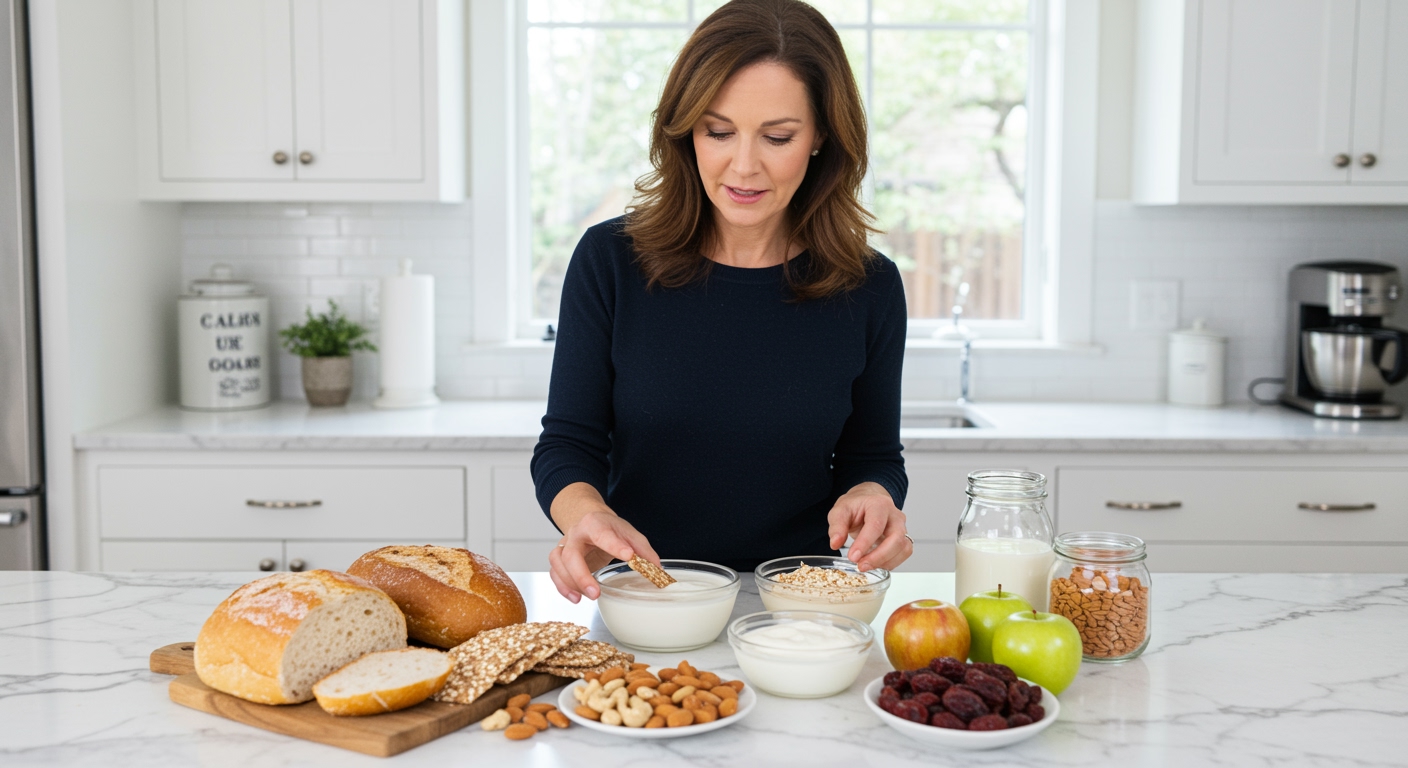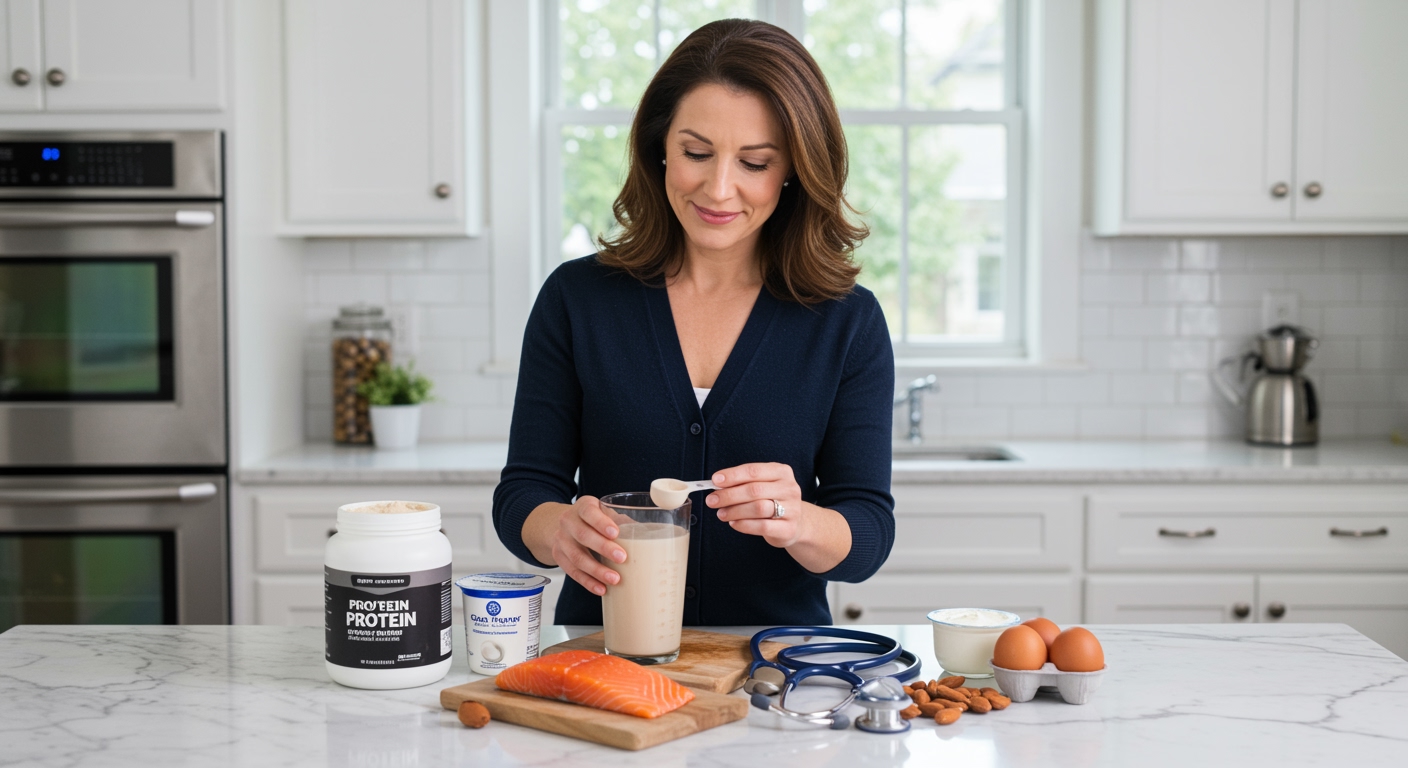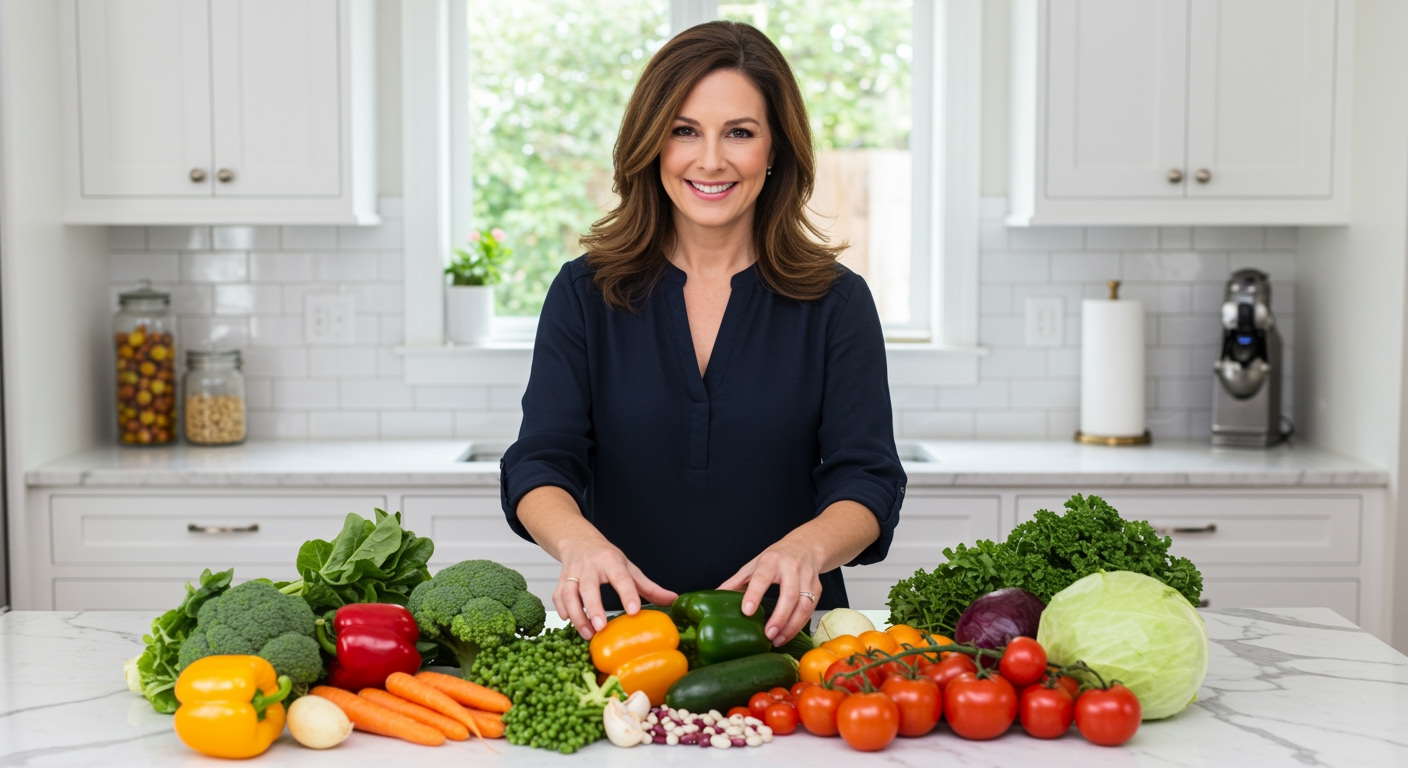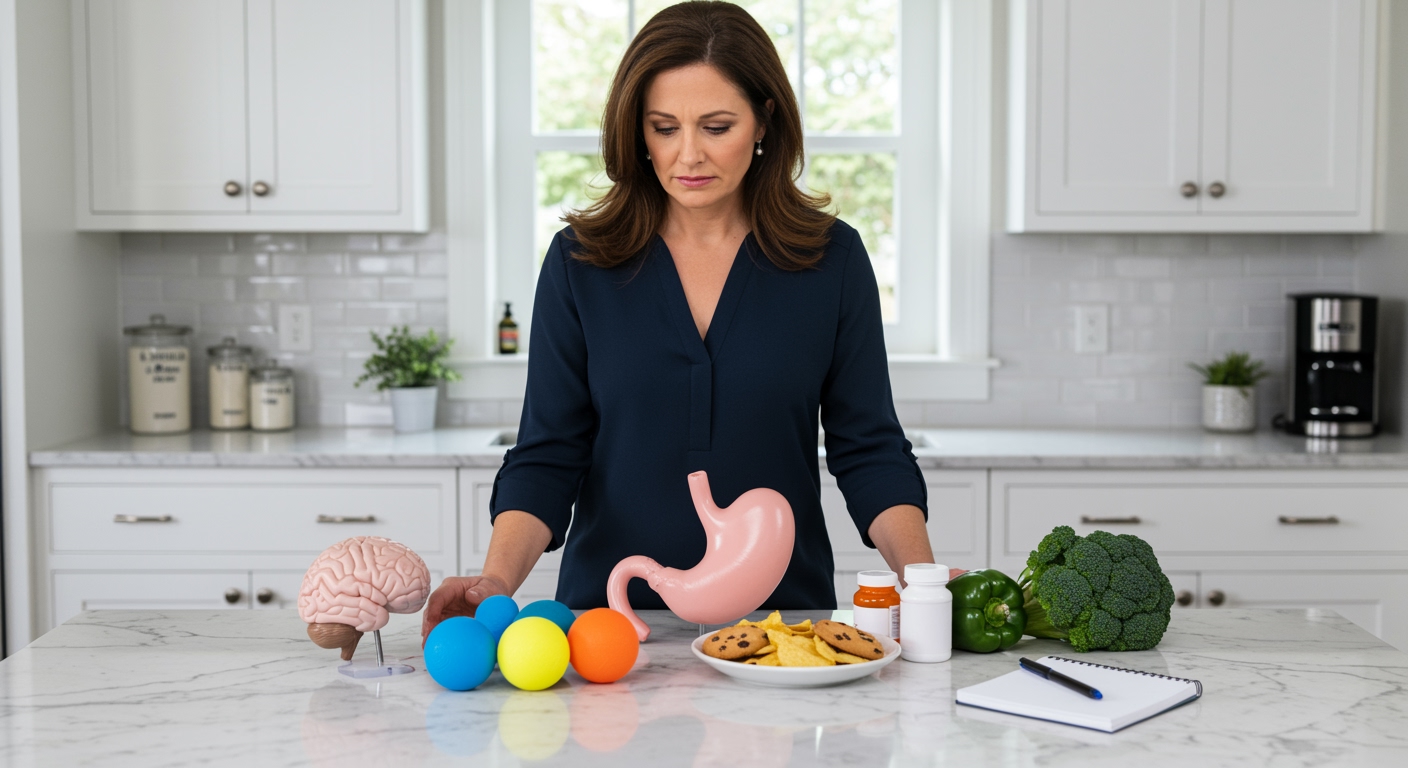✪ Key Highlight: Dutch researchers found that changing food texture alone reduced daily calorie intake by 369 calories without affecting satisfaction levels.
Introduction
Imagine eating the same foods you love but automatically consuming 369 fewer calories every day without feeling hungry or deprived.
Scientists from the Netherlands just discovered that food texture alone can dramatically reduce how much we eat, even when the foods remain identical in every other way.
Hi, I’m Abdur, your nutrition coach and today I’m going to analyze this groundbreaking study that reveals how making processed foods harder to chew could revolutionize weight management without requiring willpower or food restrictions.
What Did The Dutch Researchers Actually Discover?
The Restructure trial from Wageningen University involved 41 participants who ate two different 14-day diets consisting of more than 90 percent ultra-processed foods.
The only difference between these diets was food texture – one featured foods that required slow, deliberate chewing while the other contained soft, easy-to-eat versions.
Participants could eat as much as they wanted during both diet periods and were instructed to eat until they felt comfortably full.
The researchers carefully matched both diets for portion sizes, calorie content, and food types to ensure that texture was the only variable affecting eating behavior.
Most meals were consumed in a controlled university setting, but participants maintained their normal evening routines at home.
This rigorous design allowed scientists to isolate the specific impact of eating speed on calorie consumption without other confounding factors.
✪ Fact: Ultra-processed foods now make up over 50% of calories in many Western diets, making texture modification particularly relevant for public health.
How Much Did Food Texture Actually Matter?
The results were striking – participants consumed 369 fewer calories per day when eating the harder-to-chew foods compared to the soft, quick-eating versions.
Over the 14-day period, this difference accumulated to more than 5,000 total calories between the two diet conditions.
What surprised researchers most was that participants reported feeling equally satisfied and full on both diets despite eating significantly less on the slow-eating version.
Professor Ciarán Forde noted that almost all participants naturally adjusted their eating behaviors in response to meal textures without any conscious effort or guidance.
The consistency of this effect across nearly all study participants suggests that texture-driven eating rate is a fundamental biological response rather than a learned behavior.
This finding challenges the common assumption that ultra-processed foods cause overeating solely because they taste good or are “hyper-palatable.”
✪ Pro Tip: Chew each bite 20-30 times to naturally slow your eating speed and activate satiety signals before overeating occurs.
Why Does Eating Speed Control How Much We Consume?
When we eat quickly, our brain doesn’t receive adequate time to process satiety signals from our digestive system.
Hormones like cholecystokinin (CCK) and glucagon-like peptide-1 (GLP-1) need approximately 15-20 minutes to reach peak levels and signal fullness to our brain.
Soft, easy-to-eat foods allow us to consume large quantities before these natural appetite regulation mechanisms can effectively function.
Harder textures force slower eating through increased chewing, which activates mechanical receptors in our jaw muscles and triggers early satiety responses.
The physical act of chewing also stimulates vagal nerve pathways that communicate directly with brain regions controlling hunger and fullness.
This explains why participants felt equally satisfied despite eating less – their bodies had sufficient time to recognize and respond to natural fullness cues.
✪ Note: Satiety hormones peak 15-20 minutes after eating begins, which is why eating slowly allows better appetite control.
What Does This Mean For Your Daily Food Choices?
This research suggests that choosing foods with firmer textures could be a simple strategy for natural portion control without restrictive dieting.
Instead of avoiding ultra-processed foods entirely, you might focus on selecting versions that require more chewing effort and eating time.
For example, choosing crusty bread over soft white bread, or selecting whole grain crackers instead of smooth, melt-in-your-mouth varieties.
The study findings align with previous research showing that people eat up to 26 percent fewer calories when consuming hard, minimally processed meals compared to soft, ultra-processed alternatives.
This approach doesn’t require eliminating favorite foods or following complex meal plans – just making texture-conscious choices within your existing food preferences.
The Restructure project is part of a five-year Dutch government initiative to help people make healthier food choices and encourage food companies to develop products with better texture profiles.
✪ Pro Tip: Add nuts, seeds, or crunchy vegetables to soft meals to increase chewing time and naturally reduce portion sizes.
The Bottom Line
This Dutch study provides compelling evidence that food texture alone can significantly reduce calorie intake without compromising satisfaction or requiring conscious restriction.
Smart nutrition isn’t about avoiding foods you love – it’s about choosing versions that work with your body’s natural appetite control systems.
I’d love to hear your thoughts on this research and whether you’ve noticed differences in how satisfied you feel when eating foods with different textures – please share your experiences in the comments below.
References
At NutritionCrown, we use quality and credible sources to ensure our content is accurate and trustworthy. Below are the sources referenced in writing this article:
- EUFIC: Eating rate has sustained effects on energy intake from ultra-processed diets, new study reveals
- PMC: Ultra-processed food consumption and adult mortality risk
- News Medical: Can changing food texture reduce how much we eat? Dutch study investigates
- PubMed: The Restructure study protocol
- Wiley Online Library: Nutrition Bulletin study on food texture and eating rate





